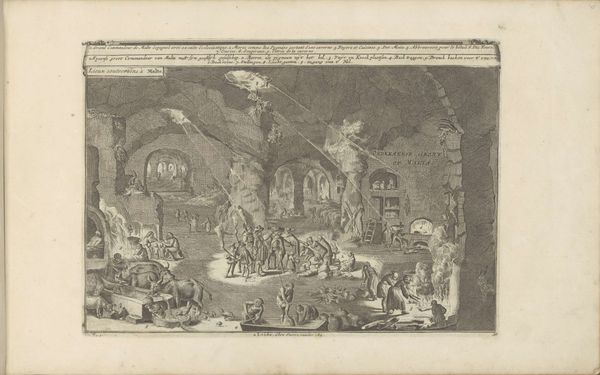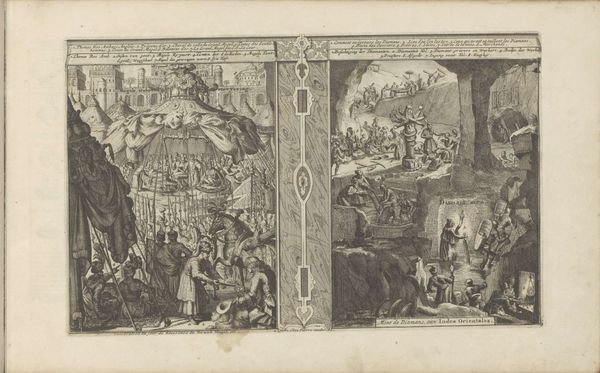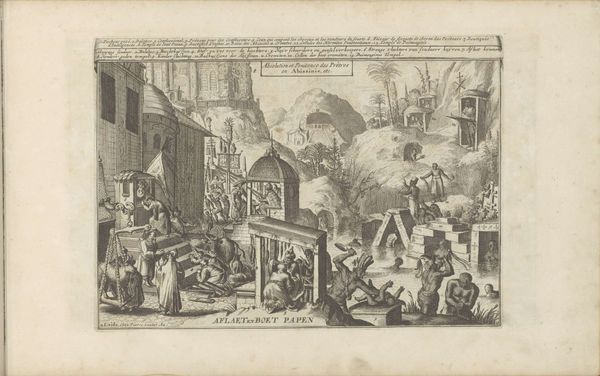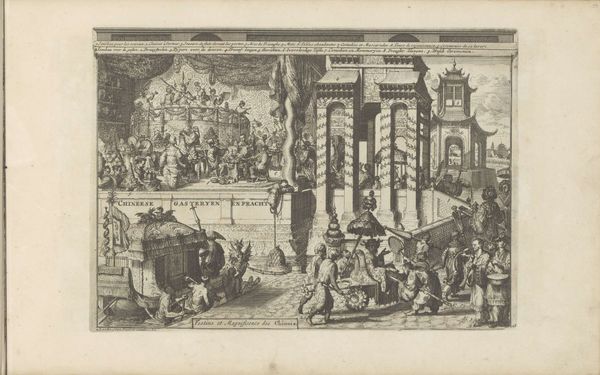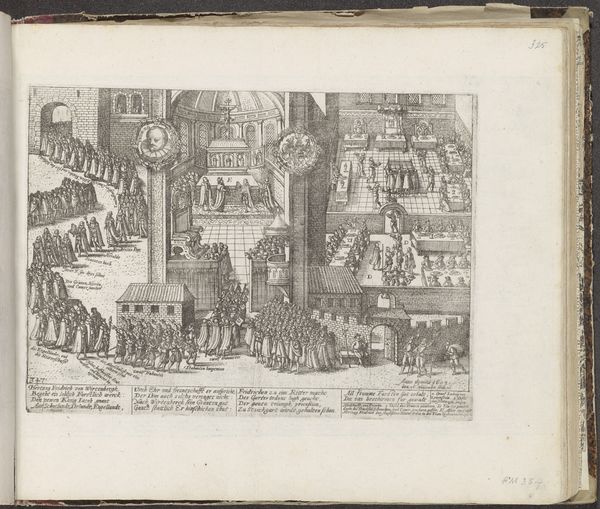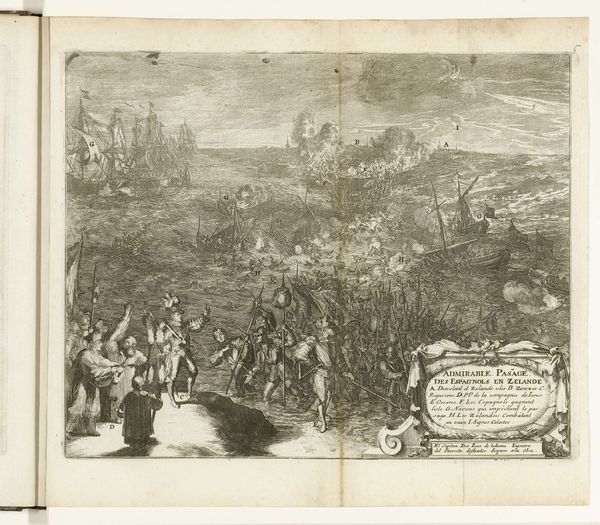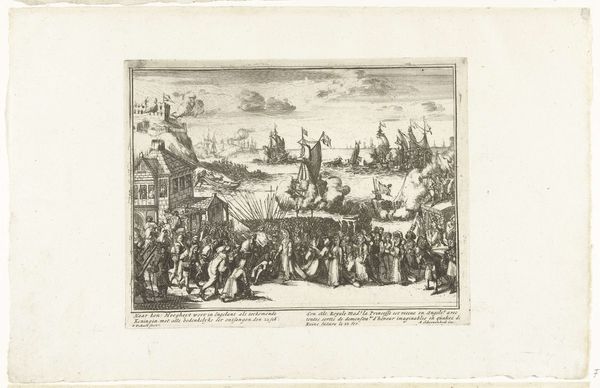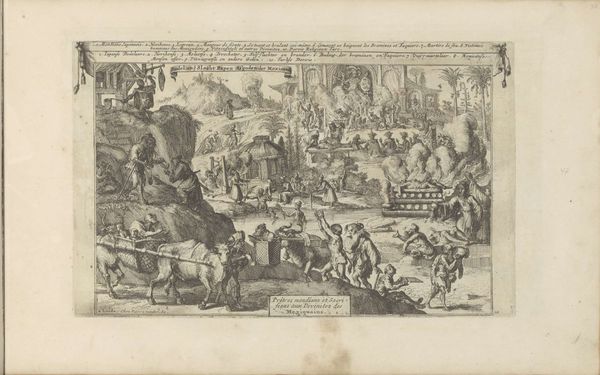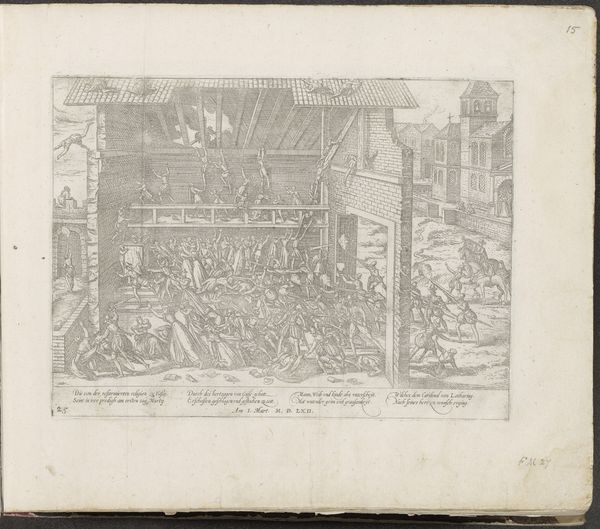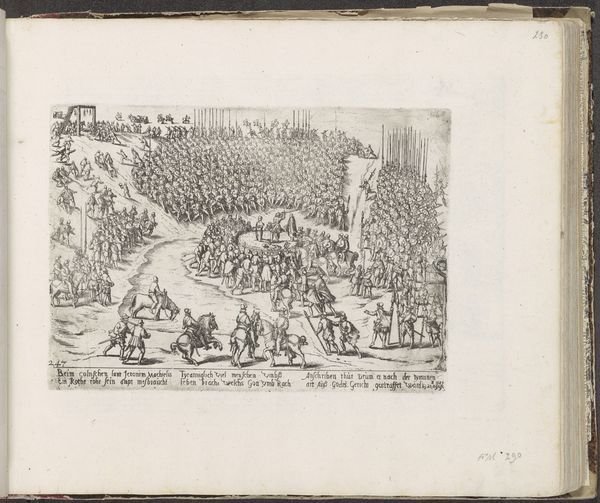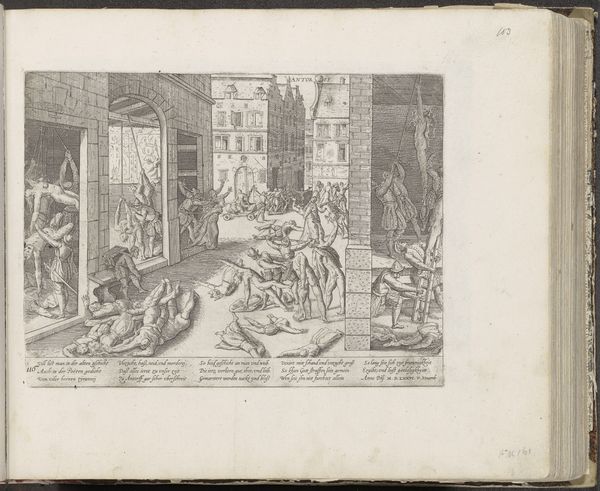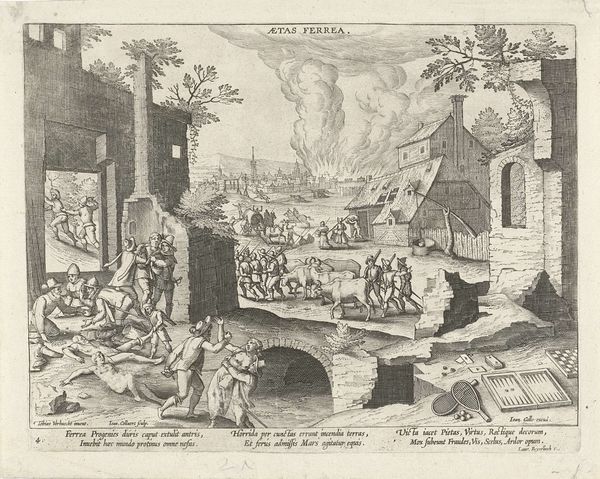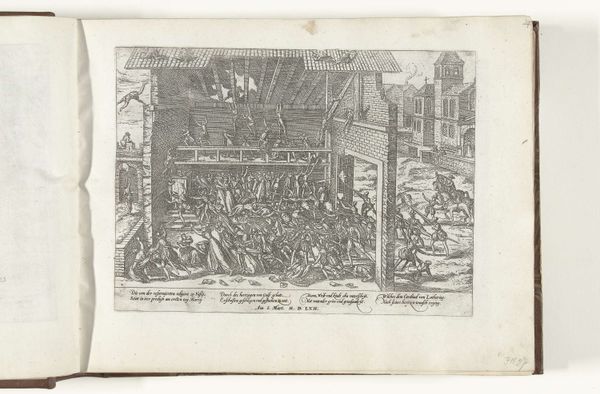
engraving
#
baroque
#
genre-painting
#
history-painting
#
engraving
Dimensions: height 216 mm, width 297 mm
Copyright: Rijks Museum: Open Domain
Curator: The scene before us is an engraving titled "Groot Commandeur van Malta bezoekt Moren in een grot," or "Grand Commander of Malta Visits Moors in a Cave," dating back to 1726. Its creator remains anonymous, and it's currently housed at the Rijksmuseum. My first impression, frankly, is what a chaotic and busy cavern it appears to be. Editor: My initial reaction is of stark contrast – a confluence of light and dark that draws attention to complex relations between colonizer and colonized within this subterranean space. The scene depicts not only a meeting, but also systems of labor. Curator: Absolutely. Look at the array of activities; there's metalwork happening, figures gathered around fires, what appears to be a boat pulling into the cave... It's teeming with industry! The light sources create an interesting pattern, focusing our eye to the different depths of the cave and suggesting that, perhaps, not all is as visible as it appears at first glance. Editor: Indeed. Consider the presence of the Grand Commander juxtaposed against this backdrop. The image seems to underscore not only a spatial hierarchy but also one predicated upon extraction and possibly exploitation of both human and natural resources within this dark site. The depiction leans heavily into early modern Orientalist tropes, showing "Moors" as an "exotic" labor force within *their* homeland. Curator: That adds a rather discomforting dimension to it, doesn't it? And speaking of exotic, there's a touch of fantasy in how the cavern is rendered; almost dreamlike, the cave itself seems like a theater stage upon which relations play out. Editor: Yes. It’s Baroque drama unfolding, framed in an age when notions of cultural and racial superiority were increasingly used to legitimize colonialism. The very setting, this deep, dark cavern, could symbolize the concealed, often brutal realities beneath such encounters. We can think of it, too, as a "contact zone," ripe with both potential and conflict. Curator: I see what you mean, though at first glance I was lost in its detailed chaos. Thinking about that dark setting also reminds me of other grottos from the 18th century; a number of aristocrats recreated these grotto spaces to signal a different relation with the ‘primitive,’ a fascination or collecting craze that had nothing to do with their relations of command... Perhaps, though, even this signals more of the same. Editor: Perhaps it always signals more of the same. Examining "Groot Commandeur van Malta bezoekt Moren in een grot" asks us to go beneath its immediate narrative into thinking of representations, too, as material in the practice of colonial power. Curator: So it appears this little journey into a grotto has asked bigger questions of us after all. How unexpected.
Comments
No comments
Be the first to comment and join the conversation on the ultimate creative platform.
